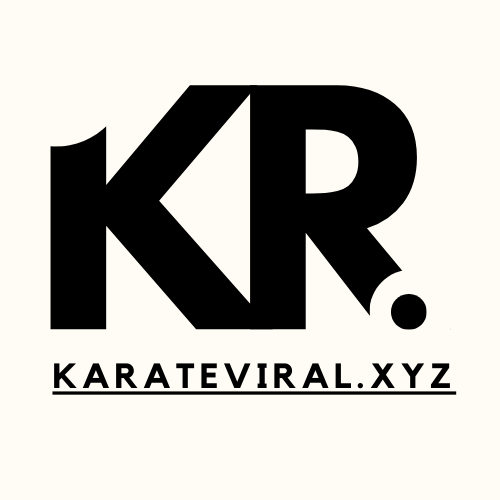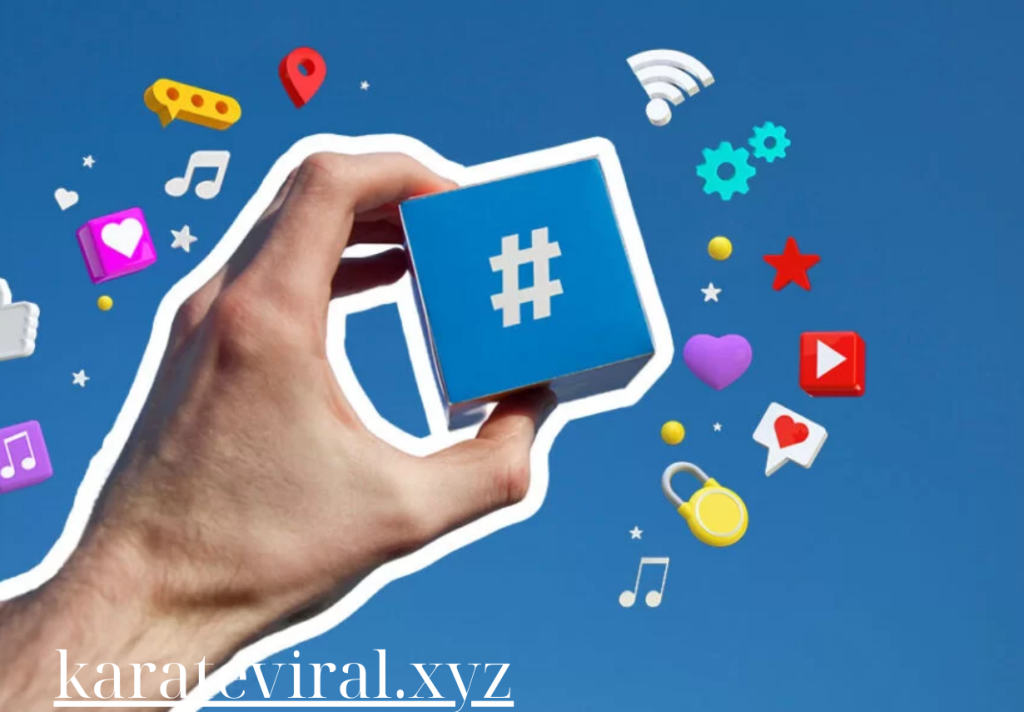Content Creation & Engagement
Using Hashtags & Tags Effectively: Boost Your Social Media Reach and Visibility
In the fast-paced world of social media, maximizing your reach and visibility is crucial to growing your audience and building engagement. One of the most powerful tools to achieve this is the strategic use of hashtags and tags. Whether you’re promoting a business, sharing content, or building a personal brand, learning how to use hashtags and tags effectively can significantly enhance your social media performance. In this guide, we’ll explore the best practices for using hashtags and tags across different platforms to boost your visibility and expand your audience.
1. What Are Hashtags and Why Are They Important?
Hashtags are keywords or phrases preceded by the “#” symbol that categorize content, making it easier for users to find related posts on social media platforms like Instagram, Twitter, LinkedIn, TikTok, and Facebook. They act as content discovery tools, helping users connect with topics, trends, and communities of interest.
Key Benefits of Using Hashtags:
- Increased Discoverability: Hashtags make your content searchable, allowing users who don’t follow you to find your posts through relevant hashtags.
- Improved Engagement: Posts with well-chosen hashtags often receive more engagement, including likes, comments, and shares.
- Trend Participation: By using trending hashtags, you can join larger conversations or movements, boosting your visibility within those discussions.
- Targeted Audience Reach: Hashtags help you reach a more targeted audience by associating your content with specific interests, themes, or niches.
Pro tip: Research and use hashtags that are relevant to your content and audience. Overloading your posts with irrelevant or overly popular hashtags can dilute your message and reduce engagement.
2. Best Practices for Using Hashtags on Different Platforms
Different social media platforms have varying rules and etiquette when it comes to hashtag usage. Here’s how to use hashtags effectively across the major platforms:
1. Instagram
Instagram allows up to 30 hashtags per post, but using the right mix is key to success.
- Use a Mix of Hashtags: Combine popular hashtags with niche hashtags to balance reach and relevance. Popular hashtags increase exposure, while niche hashtags target a specific audience.
- Incorporate Hashtags in Stories: Use hashtags in your Instagram Stories to make them discoverable through the platform’s hashtag searches.
- Hide Hashtags for a Cleaner Look: You can place hashtags in a comment or at the end of a post with line breaks to keep your caption clean.
Pro tip: Monitor hashtag performance with Instagram Insights to see which ones drive the most engagement and adjust your strategy accordingly.
2. Twitter
Hashtags on Twitter are best used sparingly. A good rule of thumb is to use 1-2 hashtags per tweet for maximum effectiveness.
- Use Trending Hashtags: Check Twitter’s Trending Topics to find relevant hashtags for popular discussions.
- Keep it Short: Twitter’s character limit encourages brevity, so focus on short, memorable hashtags that fit easily into your tweets.
- Join Twitter Chats: Participate in or host Twitter chats by using a specific hashtag to engage with a community around a particular topic or event.
Pro tip: Use hashtags in the context of your sentence rather than placing them at the end. This makes your tweet look more natural and engaging.
3. LinkedIn
Hashtags are becoming more prominent on LinkedIn, especially for professionals looking to boost their content visibility.
- Use 3-5 Hashtags: LinkedIn recommends using a handful of relevant hashtags in your posts to reach the right audience.
- Professional Focus: Stick to industry-specific or professional hashtags to target business-related content.
- Engage in Hashtag Communities: Follow specific hashtags to engage with related content and join industry discussions.
Pro tip: Add hashtags in the comment section of your LinkedIn articles to make them more discoverable and reach a wider audience.
4. TikTok
Hashtags play a major role in content discovery on TikTok, especially through the For You page.
- Use Trending and Challenge Hashtags: Participate in TikTok challenges by using relevant hashtags. This is a great way to boost visibility and gain followers.
- Limit to 3-5 Hashtags: TikTok’s character limit for captions encourages concise use of hashtags, so choose a mix of trending and niche hashtags.
- Create Branded Hashtags: Launch your own branded hashtag challenge to encourage user-generated content and increase engagement.
Pro tip: Keep up with trending sounds and combine them with popular hashtags to increase your chances of landing on the For You page.
5. Facebook
While hashtags are less impactful on Facebook, they can still help categorize content and make posts searchable.
- Use Sparingly: Limit your hashtag use to 1-2 relevant hashtags. Too many hashtags can look spammy on Facebook.
- Leverage Event-Specific Hashtags: For events, campaigns, or causes, create and use specific hashtags to help users follow along with updates and related posts.
Pro tip: Test whether hashtags work for your specific audience on Facebook, as their effectiveness can vary based on how users engage with your content.
3. What Are Tags and How Can You Use Them?
Tags involve mentioning or tagging other accounts in your posts, stories, or comments. Tagging people or businesses can lead to increased visibility by notifying them of your post and encouraging engagement from their audience.
Benefits of Using Tags:
- Broaden Your Reach: Tagging influencers, collaborators, or brands in your posts can extend your content’s reach to their followers.
- Increase Engagement: When you tag others, you create an opportunity for them to engage with your content by liking, sharing, or commenting on it.
- Promote Collaborations: Tags are especially useful when promoting partnerships, events, or giveaways, as they make it easy for all involved parties to share and promote the content.
Tips for Effective Tagging:
- Tag Relevant Accounts: Only tag users or businesses who are directly related to the post. Avoid random tagging as it can appear spammy and decrease engagement.
- Tag in Stories: On Instagram and Facebook Stories, tag accounts to notify them about your content. This is a great way to shout out collaborators, customers, or influencers.
- Give Credit: Always tag content creators, photographers, or sources when sharing their work. This builds goodwill and encourages further engagement.
Pro tip: Don’t overuse tags—tagging too many people in one post can come off as spammy. Stick to relevant accounts to keep your content focused.
4. Creating and Using Branded Hashtags
A branded hashtag is a custom hashtag unique to your business or campaign. It helps organize content around your brand and encourages user-generated content.
How to Create an Effective Branded Hashtag:
- Keep it Simple and Memorable: Choose a hashtag that is short, easy to remember, and free of complicated words or phrases.
- Make It Relevant: Ensure that your branded hashtag reflects your business, product, or campaign.
- Encourage User Participation: Promote your hashtag across your social media platforms and encourage your followers to use it in their posts.
Benefits of a Branded Hashtag:
- Brand Awareness: A well-used branded hashtag can increase brand visibility and make it easier for users to find content related to your business.
- Track Engagement: By monitoring your branded hashtag, you can easily track user engagement, measure the success of campaigns, and see how your audience is interacting with your content.
- Foster Community: A branded hashtag helps create a sense of community among your followers, allowing them to engage with your brand and other like-minded users.
Pro tip: Consider launching a hashtag challenge or contest using your branded hashtag to generate excitement, increase engagement, and encourage user-generated content.
5. Tracking Hashtag Performance
To ensure your hashtag and tagging strategy is working, it’s important to track performance metrics. Monitoring your hashtag usage will help you identify which hashtags are driving the most engagement and visibility.
How to Track Hashtag Performance:
- Use Social Media Analytics Tools: Most platforms, including Instagram, Twitter, and LinkedIn, provide built-in analytics that show how your hashtags are performing.
- Track Engagement: Monitor the number of likes, comments, shares, and clicks generated by posts with specific hashtags.
- Use Third-Party Tools: Tools like Sprout Social, Hootsuite, or Hashtagify can give you more detailed insights into hashtag performance across multiple platforms.
Pro tip: Regularly review the performance of your hashtags and make adjustments based on what’s working and what’s not. Use successful hashtags more frequently and drop those that aren’t driving engagement.
Conclusion
Mastering the use of hashtags and tags is an essential part of any social media strategy. By using hashtags strategically and tagging relevant accounts, you can boost your visibility, expand your reach, and increase engagement across all social media platforms. Whether you’re using popular, niche, or branded hashtags, optimizing their use can significantly enhance your social media presence and help you grow your audience. Start experimenting with these techniques today to see a noticeable impact on your social media performance.

